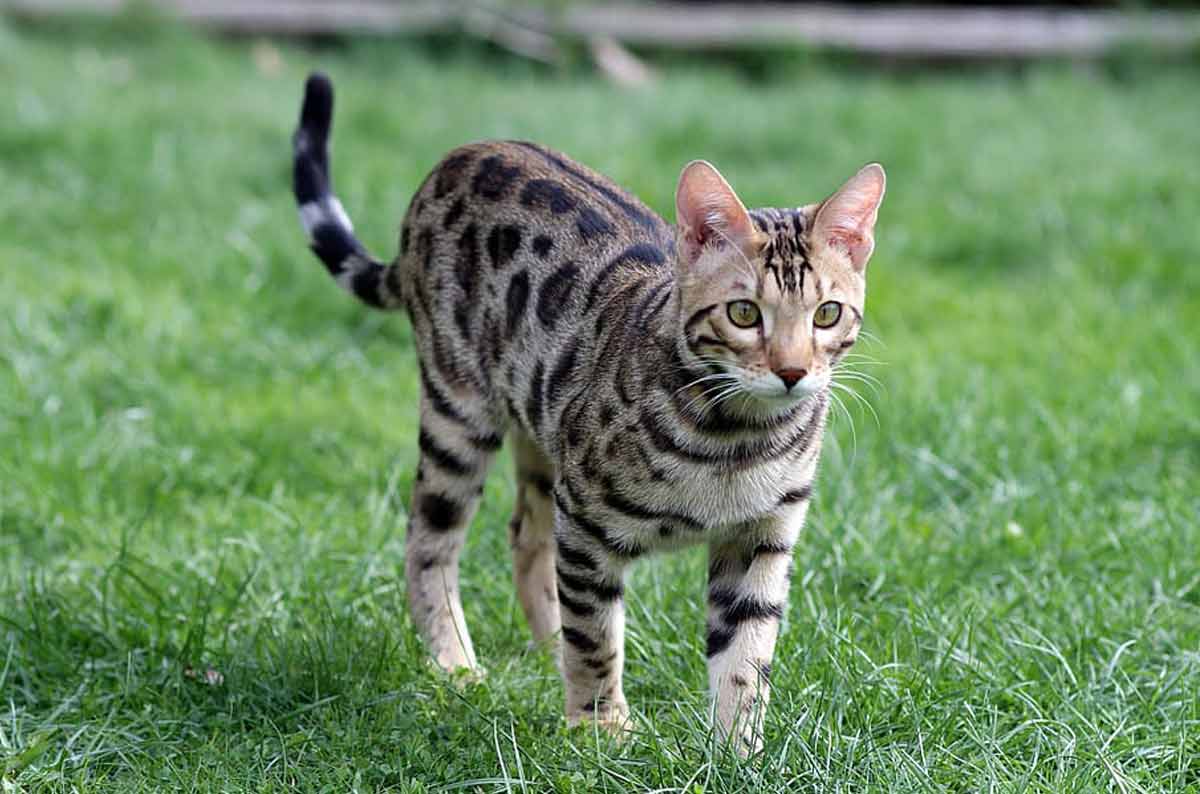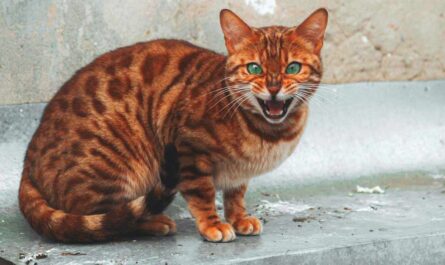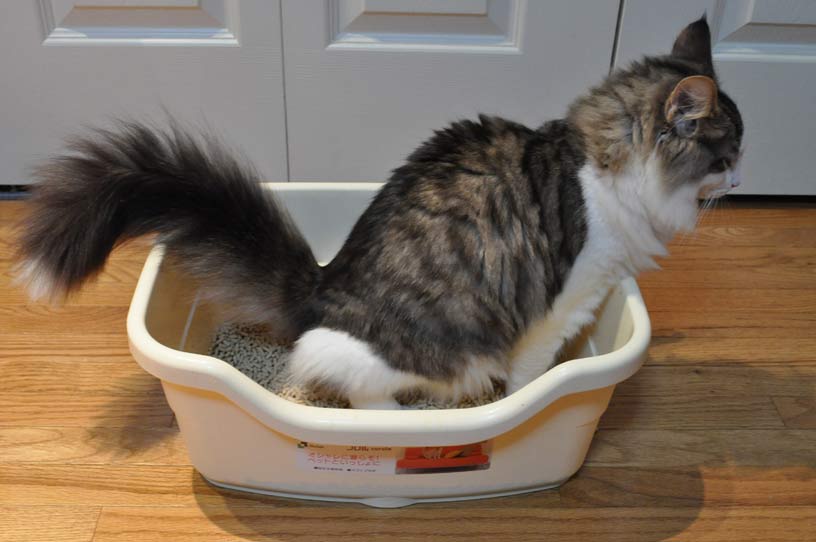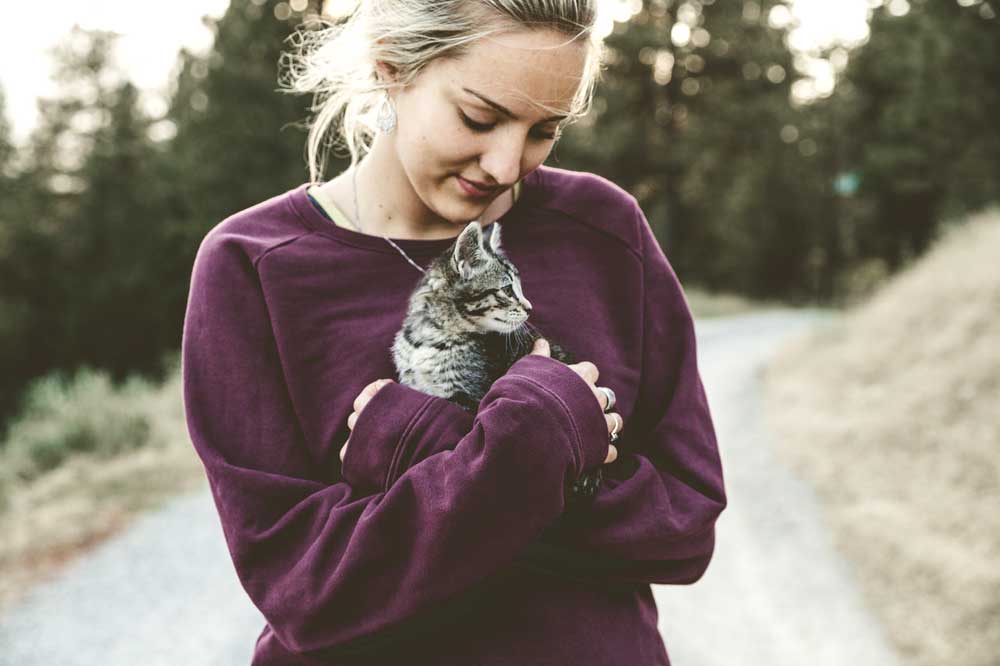How Do Cats Hunt Their Prey, Mice, Bird, Fish, Rat For Food? Cats, those enigmatic and feline creatures, possess an innate hunting instinct that has been finely honed through centuries of evolution. This instinct is deeply rooted in their ancestral lineage, tracing back to their wild progenitors. Within the intricate tapestry of their DNA, a primal drive for survival is woven, dictating their approach to hunting prey. In the intricate dance of survival, the cat’s hunting prowess emerges as a multifaceted display of instinct, skill, and adaptability. From the calculated stalking of mice to the aerial acrobatics employed in bird hunting, felines navigate the delicate balance between predator and opportunist. Their ability to patiently wait for the right moment and resort to resourceful foraging unveils a sophisticated approach to securing sustenance in the ever-changing tapestry of their environment.
The Predatory Instincts of Domestic Cats
When you first welcome a new kitten into your home, the contrast between their adorable, fluffy appearance and their ancestral lineage as formidable predators can be quite astonishing. It’s a challenge to reconcile the image of your pint-sized feline companion with the knowledge that cats belong to a highly successful lineage of hunters. Left to their own devices, cats engage in the pursuit of a diverse range of prey, including small mammals, lizards, and birds. The startling statistics reveal the extent of their predatory prowess, with cats accounting for the staggering demise of 1.3 to 4 billion birds and 6.3 to 22.3 billion mammals annually in the United States alone.
Unveiling the Enigma: How Cats Hunt
The juxtaposition of your tiny bundle of fluff with the notion of a stealthy predator might seem inconceivable. Questions arise: How do cats engage in hunting? Are there specific times of the day when they prefer to stalk and pounce? Furthermore, what types of prey do cats target in their relentless pursuit of the thrill of the hunt? Delving into the intricacies of feline hunting behavior provides a captivating exploration into the primal instincts that lurk beneath the surface of your seemingly innocent cat.
The Selection of Prey: An Insight into a Cat’s Hunting Preferences
When you swing open the door and grant your cat the freedom to explore the great outdoors, a natural curiosity arises regarding the types of creatures they set their sights on. As a small predator species, cats are inherently limited by their size in terms of the prey they select. Understanding the dynamics of cat predation involves recognizing their tendency to opt for prey that is significantly smaller than themselves. The rationale behind this choice lies in the self-preservation instincts of cats, as larger prey could pose a more formidable threat and result in potential injuries.
Contrary to the image of majestic pack hunters like lions, domestic cats are solitary in their hunting endeavors. This crucial distinction shapes their choice of prey, favoring smaller and less dangerous animals. Adult cats typically focus their attention on small mammals, including mice, shrews, and baby rabbits. Advanced hunters, often those with outdoor experience, may graduate to larger prey such as rabbits, rats, and even squirrels. The risk involved in confronting animals capable of fighting back adds a layer of complexity to their hunting strategy, leading some cats to exercise caution and avoid potentially injurious encounters.
The Diverse Menu: Beyond Mammals and Birds
Expanding the scope of their hunting repertoire, cats display a penchant for a variety of prey beyond mammals and birds. Small reptiles and amphibians, such as frogs, toads, skinks, and geckos, fall within the purview of a cat’s predatory interests. Insects, with their swift and erratic movements, also become fair game for the feline hunter. The all-encompassing principle guiding a cat’s hunting decisions is simple: if it’s smaller than a rabbit and exhibits the characteristic movements of prey, a cat is likely to embark on the chase. This adaptive and opportunistic approach underscores the versatility of cats as hunters, showcasing their ability to engage with a diverse array of potential prey.
Why do cats hunt their owners?
Cats, those enigmatic and often inscrutable creatures, have been known to exhibit a peculiar behavior that leaves their owners both amused and bemused—hunting their human companions. This intriguing phenomenon, shrouded in the enigma of feline psychology, invites us to delve into the intricate web of instincts that govern these domesticated yet wild-at-heart beings.
The very essence of this feline inclination toward owner-hunting lies in the deep-seated predatory instincts that have been ingrained in their evolutionary history. Cats, as descendants of formidable hunters, harbor an instinctual drive to stalk, pounce, and capture moving objects—a trait that often extends to their unsuspecting human housemates. This behavior, far from being malicious, is an echo of their ancestral need to hone their hunting skills, even amid domesticity.
At what age do cats stop hunting?
The enigmatic timeline of a cat’s transition from a pint-sized hunter to a more sedate companion adds an extra layer of complexity to the puzzle. Unlike a neatly scripted plot, the age at which cats abandon their owner-hunting escapades varies, adding a dash of unpredictability to the narrative. While some felines may curtail their hunting endeavors as early as a few months old, others may persist in their playful predation well into adulthood. This divergence in timelines stems from a combination of genetic predispositions, individual personalities, and the environmental stimuli to which each cat is exposed during its formative years.
What time of day do cats hunt?
Cats, being crepuscular creatures, exhibit distinct hunting behaviors at various times of the day. In the early morning and late evening, when the ambient light is at its lowest, feline instincts are triggered, prompting them to engage in hunting activities. During these dimly lit periods, cats leverage their exceptional nocturnal vision, finely tuned to spot even the slightest movements in the darkened landscape. This evolutionary adaptation stems from their wild ancestry, where hunting during twilight offered a strategic advantage, aiding in both evasion and pursuit.
How do Cats Hunt Rats?
Cats, with their innate predatory instincts, employ a multifaceted approach when hunting rats. Feline agility and keen senses come into play as they stalk their prey with stealth, their sinuous bodies moving with a calculated grace. The hunt typically begins with a fixed gaze, as the cat identifies the rat’s location, leveraging its exceptional vision. Employing sharp claws and teeth, the cat executes swift and precise movements, overpowering the rodent. The cat’s keen sense of hearing aids in detecting subtle movements, making it a formidable rat hunter in both urban and rural environments.
Do Cats Hunt Rabbits?
The feline instinct, woven into the fabric of their predatory nature, extends its reach to encompass rabbits. Cats, with their agile prowess, will embark on the pursuit of rabbits, demonstrating a keen ability to capture both the vulnerable young and the more formidable adults. The nuanced dance of this feline predation unfolds, acknowledging the relative ease of securing baby rabbits while underscoring the feline prowess that can extend to larger, more seasoned quarry.
Do Cats Hunt Squirrels?
In the arboreal ballet of feline predation, squirrels become a tantalizing quarry. Cats, with a spectrum of hunting propensities, engage in the pursuit of squirrels. The dynamic unfolds as a feline dichotomy – some, respecting the tenacious defense mechanisms of squirrels, may abstain from the hunt. Others, tutored in the art of kill-kick by experienced feline mentors during their kittenhood, plunge into the pursuit of squirrels. Yet, the outcome remains uncertain, as the swift agility of squirrels introduces an element of unpredictability, making successful captures an intermittent triumph.
What Age Do Cats Stop Hunting?
The ageless pursuit of hunting for cats weaves a tale that unfolds uniquely for each feline. There exists no predetermined juncture where cats universally relinquish their hunting instincts. Instead, the continuum of hunting behavior spans the breadth of a cat’s lifetime. Some cats, enamored by the chase, persist in this primal activity well into their teens. The cessation of hunting is more likely tied to the waning vigor of aging, where a gradual reduction in kills becomes the precursor to relinquishing the chase. If a once-prolific hunter abruptly abandons this instinct, it may serve as a silent herald of underlying issues such as arthritis or other health concerns, prompting a vigilant visit to the veterinarian for investigation.
How do you know if your cat is hunting?
Deciphering the clandestine exploits of a hunting cat presents a challenge, especially when the feline wanders outdoors. The classic presentation of “presents” in the form of dead animals serves as a tangible testament, but the absence of such offerings doesn’t negate feline hunting prowess. Some cats consume their spoils, leaving no trace of their predatory endeavors. Technological aids like GPS collars offer insights into a cat’s territorial roamings, but the elusive nature of hunting remains shrouded. Collar cameras, though informative, pose both financial and safety concerns. In essence, the enigma of a cat’s hunting exploits may persist as an inscrutable facet, with some felines retaining their secrets beyond the purview of human understanding.
Do cats have a high prey drive?
Within the sinewy physiques of fit and healthy cats pulsates a visceral urge—the high prey drive. This primordial impulse propels cats to engage in a simulated hunt, be it with toys or hapless small creatures crossing their path. The intensity of this drive varies, with some cats exhibiting a fervent daily pursuit of the hunt. The innate inclination to stalk, pounce, and capture echoes the ancestral cadence that reverberates through the feline spirit.
Are all cats good hunters?
The hunting prowess of cats unfurls across a spectrum, with not all felines endowed with the same aptitude for the chase. Laziness or inherent limitations in agility may render some cats less adept at the art of hunting. Conversely, a subset of feline populations emerges as super-hunters, surpassing the average with a prowess that sets them apart. The dichotomy of hunting prowess among cats accentuates the individuality that colors their innate behaviors, painting a canvas where some felines become exemplars of the hunt, while others embrace a more languid approach to the age-old dance of predation.
Do Cats Hunt Rats?
The alleyways of feline predation intersect with the realm of rats. While some cats, instilled with a natural hunting prowess, willingly embark on the hunt for rats, others, uninitiated or averse to the challenge, may shy away. The size and aggression of rats become pivotal factors, influencing the feline decision to engage in this predatory endeavor. For those seeking feline allies in rat control, the counsel lies in enlisting the aid of semi-feral farm cats, honed in the crucible of maternal tutelage, equipped with the strategic kill-kick that empowers them to confront larger prey.
Do Cats Hunt Weasels?
In the tapestry of feline predation, weasels stand as formidable adversaries, steering many cats away from this perilous pursuit. Weasels, possessing both size and aggression, emerge as predators in their own right, casting a shadow of risk upon the feline endeavor. While exceptions exist, with some cats daring to take on weasels, the majority opt for more manageable prey, avoiding the potential hazards associated with engaging these elusive and cunning adversaries. The feline hunting strategy, adept at calculating risk, often navigates away from the pursuit of weasels in favor of less formidable quarry.
How do Cats Hunt Fish?
When it comes to hunting fish, cats showcase a different set of skills. In aquatic environments, feline hunters exhibit patience and timing. With eyes locked on the water’s surface, they wait for the opportune moment to strike. The cat’s sharp claws come into play as it skillfully swats at the fish, demonstrating remarkable dexterity. In some cases, cats may even immerse their paws in the water, showcasing adaptability in their hunting strategies. The hunt for fish highlights the versatile nature of feline predatory behavior, as they seamlessly transition from land-based to aquatic hunting methods.
How do Cats Hunt?
Cats, as natural hunters, employ a combination of sensory acuity, agility, and strategic planning in their hunting endeavors. Their keen eyesight allows them to track movement with precision, while highly sensitive whiskers aid in navigating their surroundings silently. The feline predatory approach involves a stealthy stalk, minimizing noise to ensure the element of surprise. Once in proximity, cats utilize their retractable claws and sharp teeth to subdue prey. This versatile hunting strategy is not limited to a specific type of prey, showcasing the adaptability of cats as apex predators in various ecosystems.
How do Cats Hunt at Night?
Nocturnal hunters by nature, cats undergo a transformation in their hunting behavior when the sun sets. Their specialized eyes, equipped with a high number of rod cells, enhance low-light vision, allowing them to navigate and hunt effectively in darkness. Nighttime hunting involves a heightened reliance on other senses, such as hearing and whisker sensitivity, compensating for reduced visibility. Cats become silent shadows in the dark, utilizing their nocturnal adaptations to surprise and capture prey under the veil of night.
How do Cats Hunt in the Wild?
In the wild, where survival hinges on successful hunting, cats exhibit behaviors deeply rooted in their evolutionary history. Group dynamics may come into play for larger prey, as some wild cat species engage in cooperative hunting strategies. These communal efforts involve coordinated movements and strategic positioning, emphasizing the social and adaptive aspects of feline behavior. In the wild, cats also display exceptional patience, waiting for the opportune moment to pounce and secure a meal, showcasing their prowess as skilled and adaptable hunters in diverse ecosystems.
Why is my cat hunting so much?
The enigmatic nature of feline behavior often leaves pet owners questioning the relentless hunting tendencies displayed by their domestic companions. While cats have been selectively bred over generations, their innate predatory instincts remain deeply ingrained. Modern housecats may not require hunting for sustenance, but the act itself fulfills a primal need deeply rooted in their genetic makeup. This inexplicable drive to pursue and catch prey serves as a testament to the intricate tapestry of instincts interwoven within the feline psyche.
Why do cats kill for fun?
Beyond the necessity for sustenance, cats occasionally indulge in behavior that mystifies and unsettles many pet owners—killing for sheer pleasure. This perplexing phenomenon, known as surplus killing or thrill killing, sees cats capturing and dispatching prey without the intention of consuming it. The motives behind this seemingly gratuitous violence are multifaceted. Some theories suggest that it could be an outlet for excess energy or an instinctual response to an overabundance of prey in their environment. Understanding the psychological underpinnings of this behavior adds layers to the complex relationship between domestic cats and their wild ancestry.
How do cats hunt their prey?
When it comes to hunting mice, cats are veritable masters of the art of stalking. With a sinuous grace that belies their predatory prowess, they skulk in the shadows, their movements deliberate and calculated. Their acute senses come into play, as they attune themselves to the faintest rustle or scurry. As the cat inches closer, its muscles tense, tail held low for balance, eyes fixed intently on the unsuspecting rodent, creating an aura of suspense that culminates in a swift, lethal pounce.

How do cats hunt mice?
In the realm of bird hunting, cats showcase a different facet of their hunting repertoire. Their approach takes on an aerial dimension, as they harness their agility and spring-loaded muscles to execute acrobatic leaps. The feline pursuit becomes a mesmerizing ballet of precision and coordination. With eyes locked onto the winged quarry, they ascend effortlessly, executing mid-air twists and turns that culminate in a graceful capture, emphasizing their prowess in both stealth and athleticism.
How do cats hunt birds?
Cats, as hunters, are not just agile predators but also masters of patience when it comes to securing their sustenance. Whether awaiting the opportune moment to pounce on a mouse or maintaining an unwavering focus on a potential avian meal, they exhibit an extraordinary ability to wait in silent anticipation. This patience is not merely a virtue; it is a strategy meticulously ingrained in their hunting blueprint, allowing them to conserve energy and strike with maximum efficacy.
How do cats hunt for food?
Beyond the theatrics of stalking and pouncing, cats are adept at the subtle art of foraging for food. This skill is particularly pronounced in domesticated felines, who may not rely solely on live prey. Instead, they tap into their resourcefulness, employing a variety of tactics to secure sustenance. Whether it’s scavenging for leftovers or skillfully manipulating their human companions into providing a share of their meals, cats showcase versatility in their hunting behavior that extends beyond the traditional image of the solitary predator.
How Do Cats Hunt: Process
The intricacies of feline hunting methods unveil a captivating world of instinctual prowess and calculated precision. To safeguard the local wildlife from the predatory proclivities of your feline companion, confining them indoors or providing an outdoor cat enclosure becomes imperative.
The Ephemeral Dance of Sensitive Ears
In the intricate symphony of nature, when a cat embarks on its primal quest for sustenance, it initiates the process with a meticulous observation of its surroundings. The feline, armed with a set of remarkably sensitive ears, engages in a sensory exploration that transcends the ordinary. With unparalleled finesse, it sifts through the auditory tapestry, deciphering the nuanced rustlings beneath the emerald canopy of leaves, the ethereal echoes through the undulating waves of long grass, and the almost imperceptible shuffles beneath objects artfully concealed by the hand of nature.
The Stalking Symphony: A Ballet of Stealth
The stalking phase unfurls as a silent symphony of stealth, a meticulously orchestrated ballet that inches the cat ever closer to its unsuspecting prey. Every sinew in the feline form, a marvel of evolutionary adaptation, is attuned to this near-silent promenade. The creature, crouched and poised, becomes a portrait of patience as it awaits the opportune moment for its quarry to materialize, transforming the act of hunting into an art form defined by grace and precision.
Eyes, the Sentinel of Movement
As the feline intensifies its focus, the eyes, those mesmerizing orbs of feline prowess, assume the role of sentinels of movement. The cat’s ocular marvels, finely tuned to detect even the slightest twitch in the fabric of the surrounding world, lock onto the prey with unwavering determination. In a moment of explosive energy, the cat propels itself forward, claws extended like the daggers of fate, ensnaring the prey in a lethal embrace that speaks of a relentless pursuit.
The Pounce: Where Precision Meets Brutality
In the climactic moment of the pounce, the cat undergoes a metamorphosis from a graceful stalker to a relentless predator. Claws unsheathed, they pierce the air with a swiftness that belies the deadly intent, finding their mark in the soft flesh of the unsuspecting prey. The ensuing bite, a culmination of primal precision, seals the fate of the captured quarry in a narrative written with the ink of instinct and survival.
The Ballet of Predation
For larger prey, the hunting ballet takes a dramatic turn. The cat, having successfully subdued its victim, may find itself in a macabre pirouette of death, where the roles of hunter and hunted become entwined in a dance of survival. With the prey clutched in its mouth, the feline resorts to visceral kicks, each motion a visceral display of predatory acumen, ensuring the inexorable demise of its captive and underscoring the harsh reality of the natural order.
Indoor cat hunting instinct
For indoor cats, the expression of their hunting instincts encounters unique challenges. Confined within the artificial boundaries of a home, these felines may redirect their predatory focus to toys, laser pointers, or even unsuspecting household items. Simulating a hunting environment becomes imperative for indoor cat owners, providing mental stimulation and physical activity to satiate their innate drive. Enriching the indoor space with interactive toys and puzzle feeders not only taps into the cat’s natural hunting proclivities but also nurtures a healthier and more satisfied feline companion. See why thousands of cats love BoxCat
Domestic cats’ hunting behavior
The seemingly paradoxical nature of domestic cats exhibiting hunting behaviors becomes clearer when we unravel the layers of their intricate hunting repertoire. In the confined spaces of a human dwelling, cats adapt their hunting techniques, transforming the living room into their personal hunting ground. Their keen senses come into play, detecting even the subtlest movements—perhaps a twitching hand or a dangling shoelace—and triggering a cascade of predatory behaviors. Prowling with measured steps, crouching with feline grace, and finally, launching into a calculated ambush, domestic cats manifest a microcosm of the primal hunting rituals that defined their evolutionary past.
How do cats kill their prey?
The primal dance of predator and prey is enacted with finesse when a cat zeroes in on its target. But how do these seemingly gentle creatures transform into efficient killers when the opportunity arises? The answer lies in their innate hunting arsenal—a symphony of skills that includes sharp claws, keen senses, and an uncanny ability to strike with lightning speed. Cats, employing a combination of stealth and precision, utilize their retractable claws to grip and immobilize their prey. A swift bite to the neck, reminiscent of their wild ancestors, seals the fate of the hapless “victim.” It’s a reminder that beneath the veneer of domestication, cats remain the consummate hunters, their predatory prowess echoing through the ages. Cat accessories on Amazon
Final thought
The sobriquet “natural born killers” encapsulates the inherent hunting instinct embedded in the feline psyche. A cat, in its quest for sustenance, morphs into a stealthy predator—stalking, pouncing, clawing, and biting with an almost choreographed brutality. Not all cats exhibit such predatory zeal, yet for those with a penchant for hunting, mitigating the impact on local wildlife becomes a conscientious responsibility. Seeking guidance on curbing these hunting tendencies proves invaluable, considering the substantial toll domestic cats impose on the delicate balance of wildlife survival.
Other Interesting Articles
- Cornish Rex Cat Breed: Profile, Traits, Health, Grooming, Care
- Colorpoint Shorthair Cat Breed: Profile, Traits, Grooming, Care
- Cheetoh Cat Breed: Profile, Traits, Health, Grooming, Care
- Chausie Cat Breed: Profile, Traits, Health, Grooming, Care
- Chartreux Cat Breed: Profile, Traits, Health, Grooming, Care
- Chantilly, or Tiffany Cat Breed: Profile, Traits, Grooming, Care
- Cymric Cat Breed: Profile, Traits, Health, Grooming, Care
- Dragon Li Cat Breed: Profile, Traits, Health, Grooming, Care
- Donskoy Cat Breed: Profile, Traits, Health, Grooming, Care
- European Shorthair Cat: Profile, Traits, Health, Grooming, Care
- German Rex Cat Breed: Profile, Traits, Health, Grooming, Care
- Havana Brown Cat Breed: Profile, Traits, Coats, Groom, Care
- Kurilian Bobtail Cat Breed: Profile, Traits, Coats, Groom, Care
- Korat Cat Breed Profile: Health, Traits, Coats, Groom, Care
- Javanese Cat Breed Profile: Health, Traits, Coats, Groom, Care
- Japanese Bobtail Cat Profile: Health, Traits, Coats, Groom, Care
- LaPerm Cat Breed Profile: Health, Traits, Coats, Groom, Care
- Manx Cat Breed Profile: Health, Traits, Coats, Groom, Care
- Nebelung Cat Breed Profile: Health, Traits, Groom, Care
- Norwegian Forest Breed Profile: Health, Traits, Groom, Care




